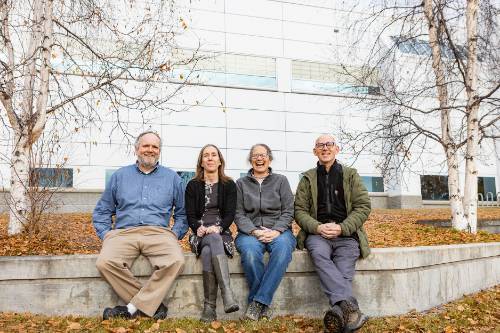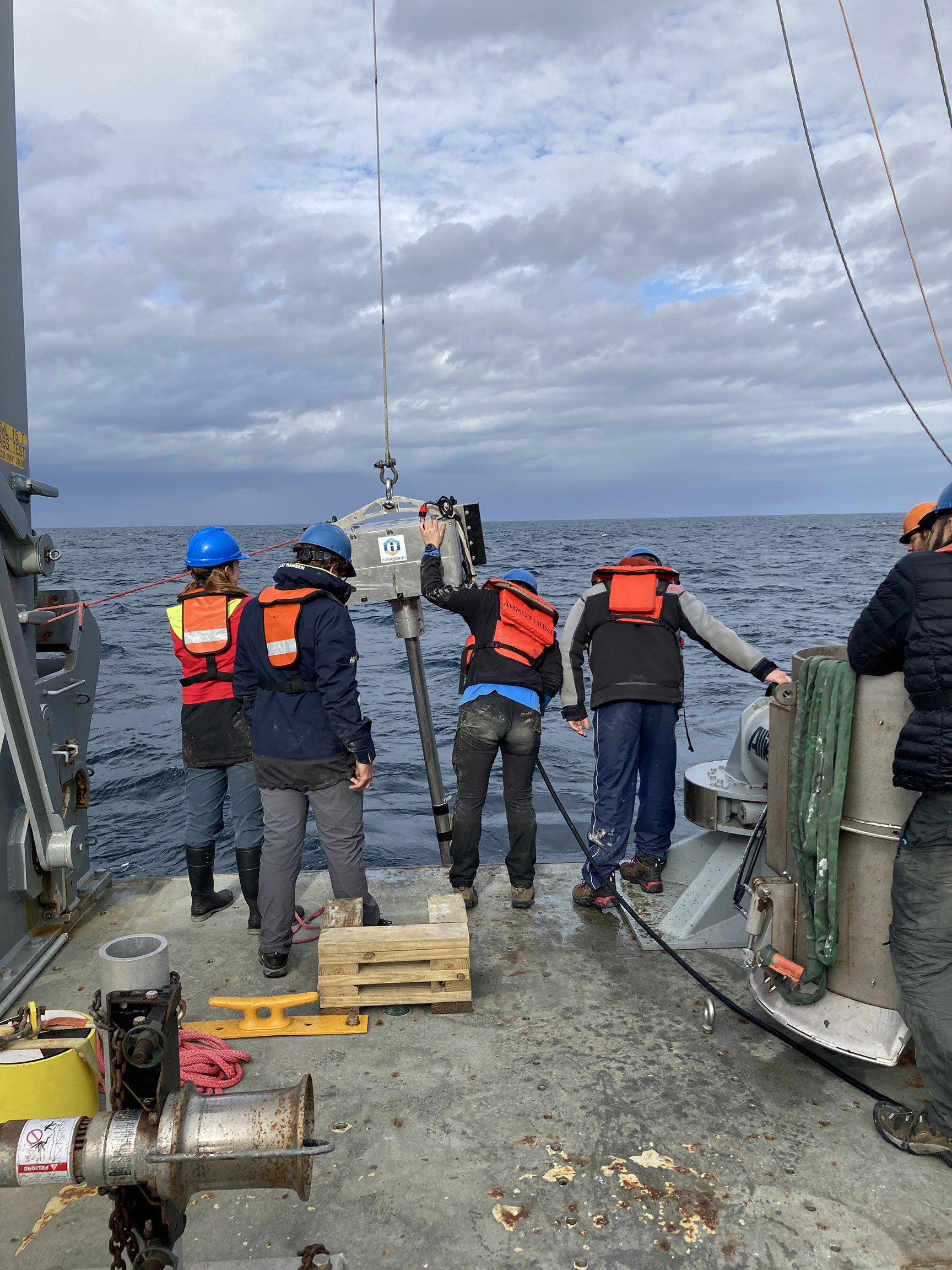UAF researchers plan in-depth Bering Land Bridge study
Tanya Clayton
907-474-7541
Feb. 15, 2022

From left, Chris Maio, Sarah Fowell, Nancy Bigelow and Matthew Wooller gather by the Reichardt Building on the Fairbanks campus.
The University of Alaska Fairbanks has received a $1.7 million grant to construct a picture of what the Bering Land Bridge looked like during the last ice age.
A team of seven scientists, led by UAF geology professor Sarah Fowell, will use the research vessel Sikuliaq to collect the sediment cores. The goal is to reconstruct the vegetation and climate of the land bridge during the last ice age.
The National Science Foundation is providing the grant to support efforts to collect sediment cores from the shallower portions of the Bering Sea shelf.
“UAF is well poised to do the work,” said Fowell. “We have a research vessel, we are adjacent to the land bridge, and we’ve got a pretty big group working on this proposal.”
No one has systematically cored the land bridge, outside the Norton Sound area in the 1970s, for the purpose of paleo-climate reconstruction, Fowell said. This has made it difficult for researchers to build an accurate chronology of the opening and closing of the land bridge as sea levels fluctuated.
A primary test they face is figuring out how to safely and affordably extract sediment cores from the ocean floor.
“Our initial plan was ocean drilling, because you can get much longer cores. But the biggest challenge with that is logistics, and it was beginning to look very expensive,” said Fowell. “Plus, for deep coring there are potential gas hazards. We needed up-to-date seismic data. That didn’t exist.”
Instead, the researchers plan to obtain shorter, less risky core samples. They’ll
team up with Oregon State University, which recently obtained vibracore equipment.
The technology uses high-frequency vibration to transfer energy to sediment, which
aids in permeating stiff, sandy layers during the coring process. This method allows
researchers to gather relatively undisturbed samples from the ocean floor.
In 2023, OSU will train Fowell, along with associate professor of geography Chris Maio, the project’s technical lead, to scan and core.

Researchers on the research vessel Armstrong use vibracore equipment to extract sea-floor sediment cores for the Woods Hole Oceanographic Institution in 2021.
“We will be working with the technicians prior to the science cruise to discuss the best way to collect 8- to 10-meter-long cores from sites on the Bering Sea shelf,” Fowell said.
UAF research team members also include Nancy Bigelow, a researcher with the Alaska Quaternary Center, and Matthew Wooller, a researcher with the UAF Institute of Northern Engineering and the College of Fisheries and Ocean Sciences. U.S. Geological Survey scientists on the project include UAF alumna Beth Caissie, David Scholl, who has worked as a UAF researcher, and Jenna Hill.
In addition to learning about the vegetation, the team will look at the relationship between the amount of sea ice and how dry the climate was during and after the last glacial stage. The scientists will study pollen, diatoms and stable isotopes for clues about the preexisting climate. Results will address longstanding questions regarding migration patterns of plants and animals, resources available to human populations, and the role of the marine gateway during the most recent past episode of global warming.
The NSF funding will also help the team conduct research and gather seismic and coring data that will aid future expeditions and be useful for helping make future climate predictions.
“This is a period of time when climate was warming,” said Caissie, a USGS physical
scientist. “Things were warming up. Sea ice was melting and probably retreating. And
we’re seeing all of those changes today. It gives a sort of road map of where we might
be heading.”
ADDITIONAL CONTACT: Sarah Fowell, 907-474-7810, sjfowell@alaska.edu
102-22


